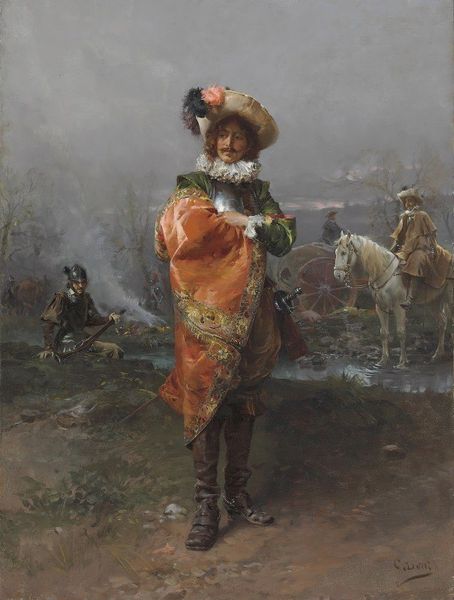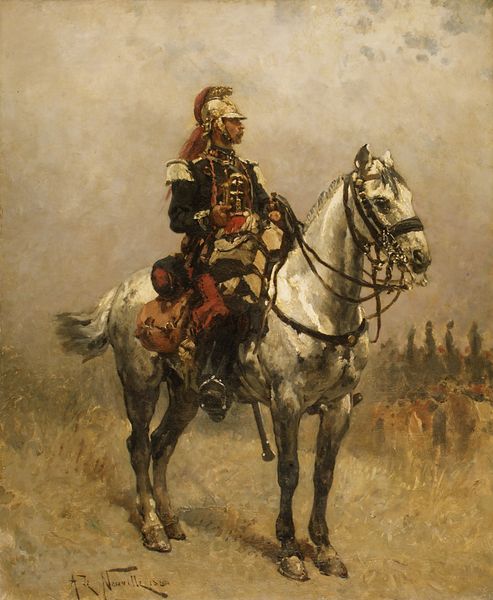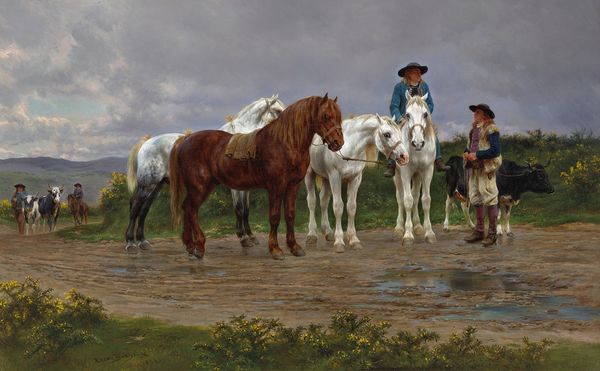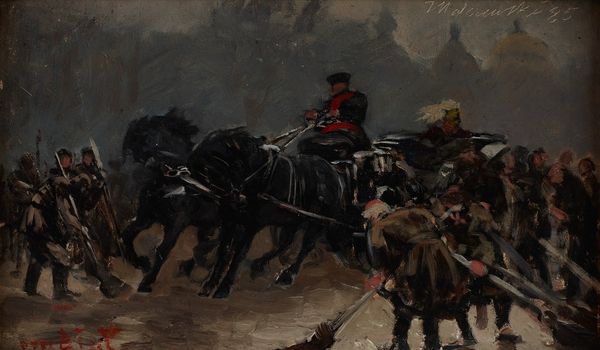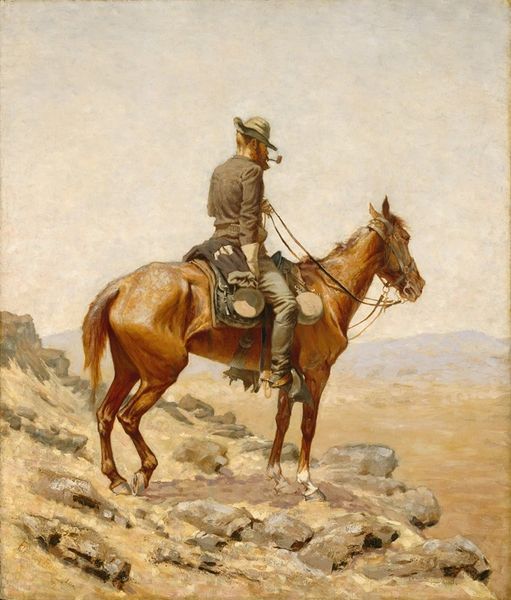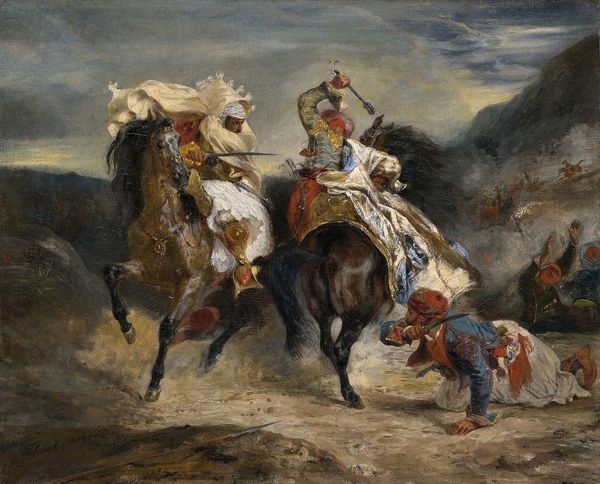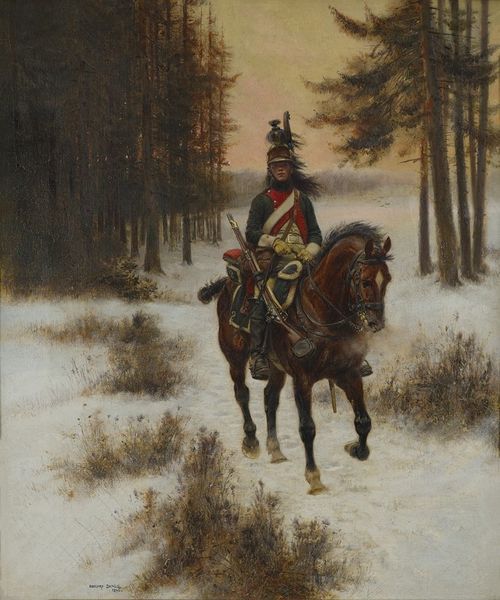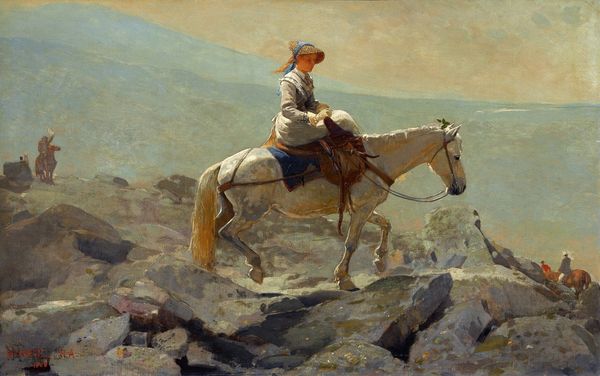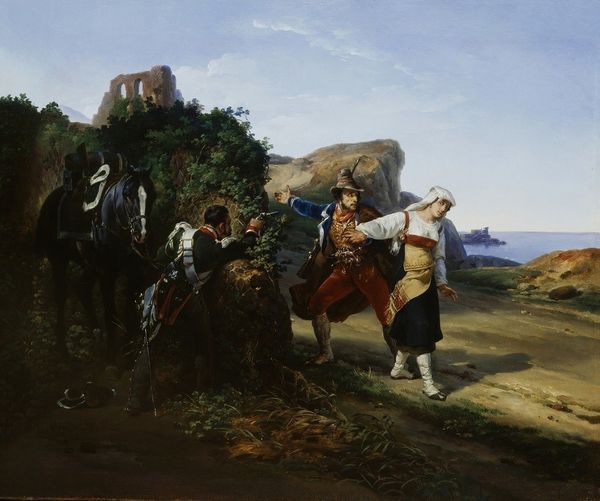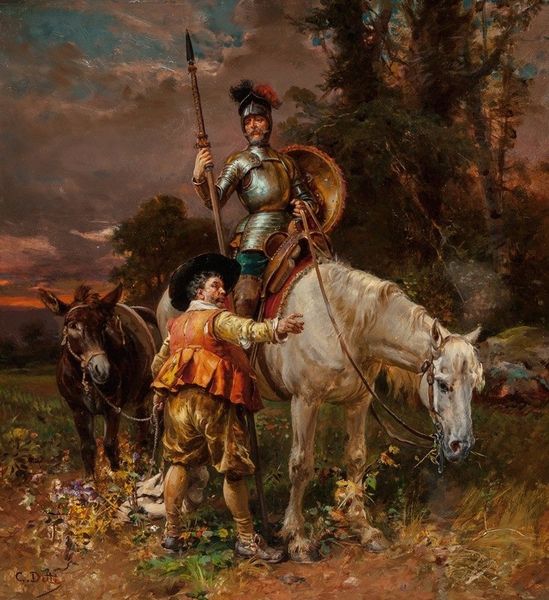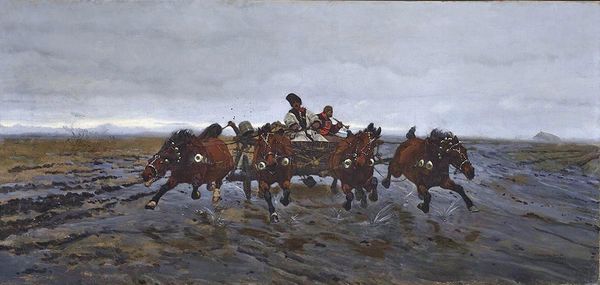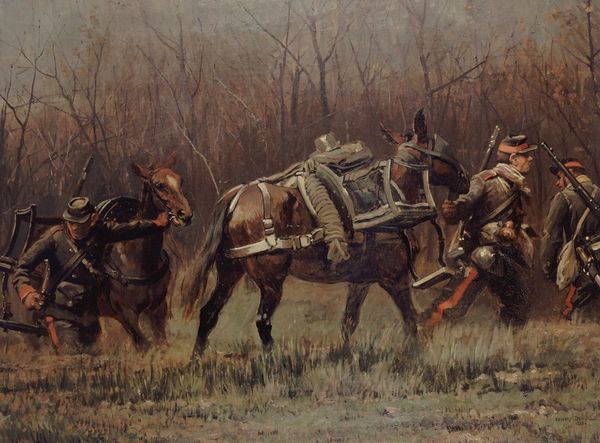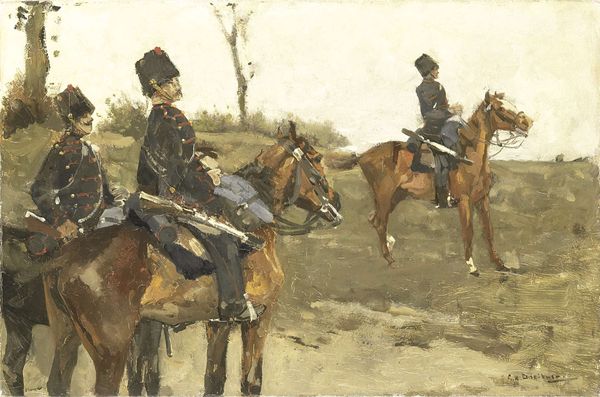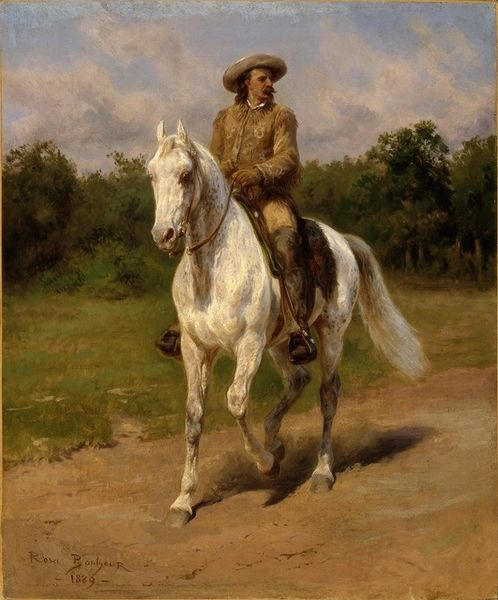
Copyright: Public Domain: Artvee
Curator: Cesare Auguste Detti painted "A Cavalier on a White Horse" around 1890. The oil painting depicts two figures on horseback set against a hazy landscape. It’s striking, isn’t it? Editor: Yes, that pallid gray sky immediately sets a rather somber tone. It evokes a sense of impending doom, perhaps reflecting some societal unease of the time. And look at how the mud splatters; these horsemen appear mired in something much bigger than themselves. Curator: Indeed. I'm fascinated by the tangible detail Detti has lavished upon their attire. You can almost feel the weight of the metal breastplate, or imagine the textures of the feathered cap. The materiality speaks volumes about their social standing and available labor, I think. Editor: I agree, but their garments suggest more than status; it also implies constructed identities and performances of power, masculinity, and conquest deeply rooted in patriarchal structures of that era. Their authority and control extend beyond just physical realms into socio-political spheres too. Curator: Absolutely. Look at the deliberate contrasts Detti creates in the textures: smooth armor against coarse cloth; and how each component, produced by vastly different crafts, contributed to the construction of their image and presence. Editor: But it goes further. Those contrasting elements also signal tension. I mean, observe their expressions and body language. Their very composure against that atmospheric gloom tells an untold narrative. Curator: Well, I'd say it tells stories of social class and privilege during a period undergoing tremendous change. Oil paintings, in their creation and consumption, remained commodities reserved only for wealthy patronage, perpetuating power dynamics inherent to a system deeply rooted in hierarchies. Editor: And whose stories do those material commodities leave out? Whose labors go unacknowledged when discussing this representation of cavaliers? Considering those unrepresented within this power structure adds vital nuance here. Curator: Precisely. And these considerations about both the knowns and unknowns make pieces like this perpetually relevant as we critically engage history itself through artwork analysis. Editor: Ultimately, reflecting on pieces like Detti’s demands we look not only behind but all around art for complete perspective concerning privilege and other intertwined systemic legacies lingering even still today.
Comments
No comments
Be the first to comment and join the conversation on the ultimate creative platform.
